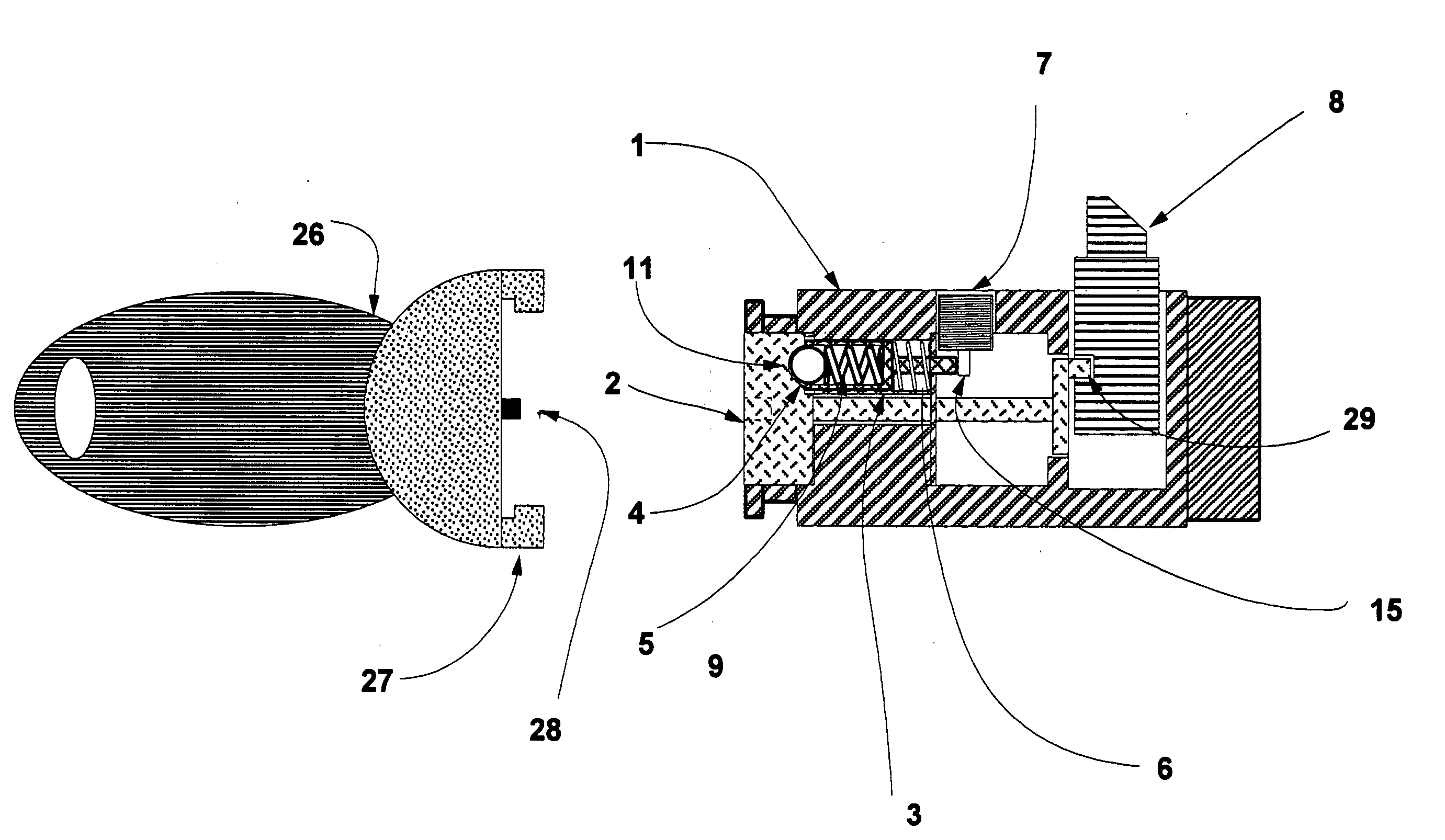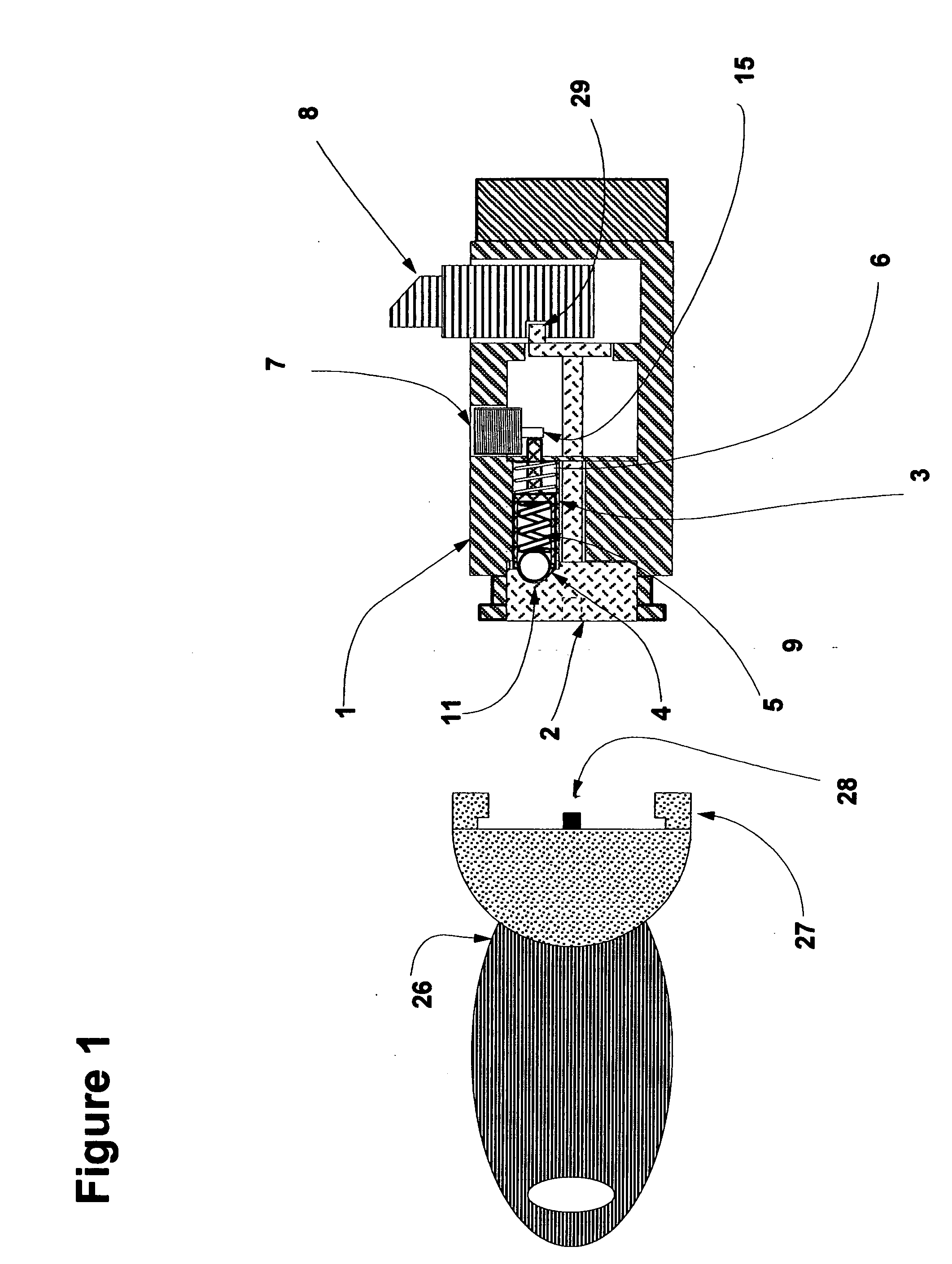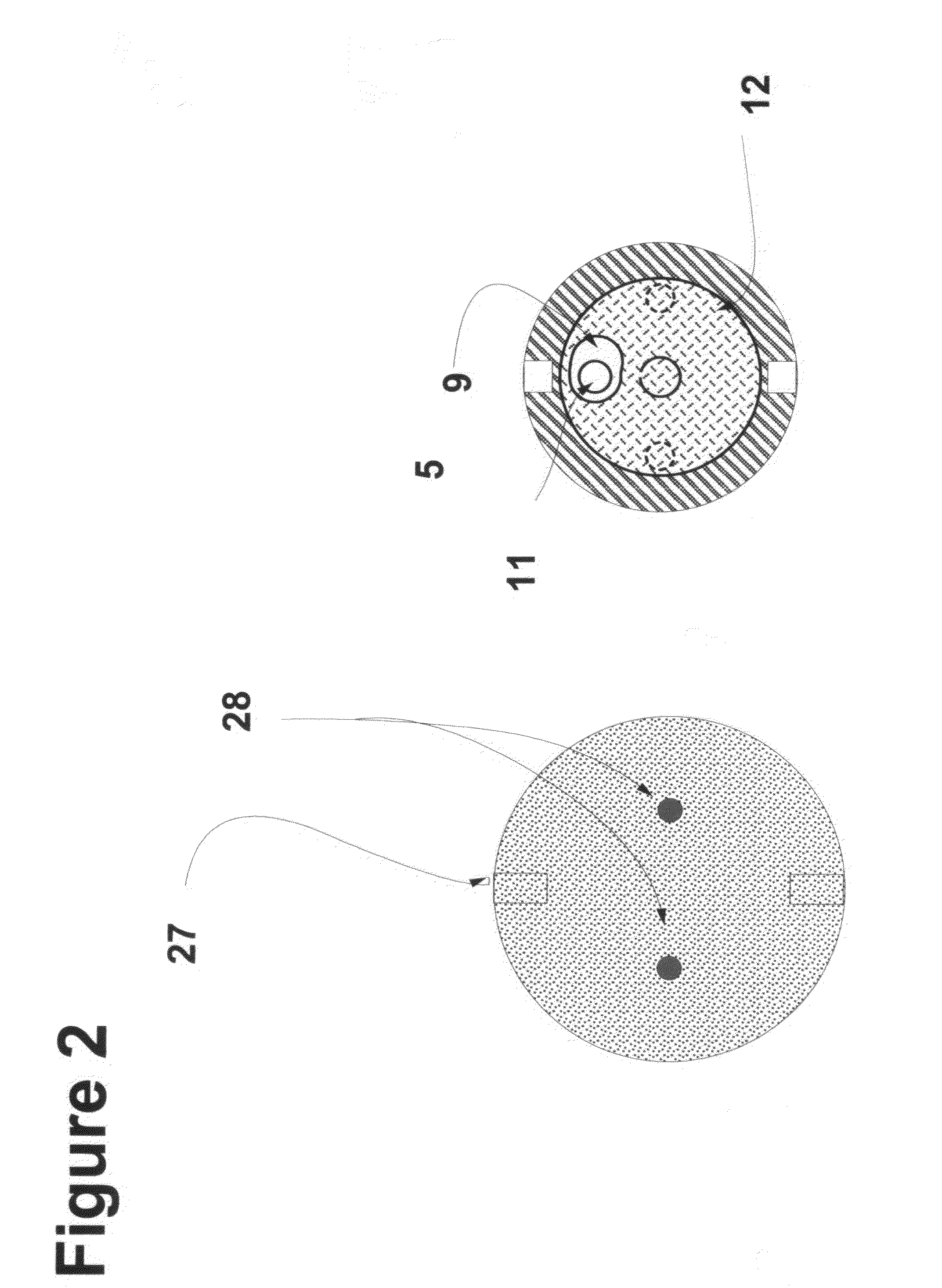Electronic lock
a technology of electronic locks and mechanical locks, applied in the field of electronic locks, can solve the problems of strength and security, mechanical locks, moving pins or other mechanical parts, and the complexity and cost of the problem of reducing,
- Summary
- Abstract
- Description
- Claims
- Application Information
AI Technical Summary
Benefits of technology
Problems solved by technology
Method used
Image
Examples
Embodiment Construction
[0026]Referring to FIGS. 1-7, the present invention is an electronic lock generally comprising a lock body (1), a front barrel (2), a locking pin (3), a ball bearing (4), a thrust spring, (5) a return spring (6), a solenoid (7), a latch (8), and a key (26). The front barrel (2) is turned by the key (26) by two drive pins (28) while the key is held on the lock body with a bayonet mechanism (27). The front barrel drives an attached cam (29) that retracts the latch (8) which opens the lock. The locking pin (3) prevents the barrel from turning unless the locking pin moves back and clears the cutout (9) in the back of the barrel (10).
[0027]The end of the locking pin (3) against the back of the barrel (2) is hollow and contains the ball bearing (4) and thrust spring (5). When at rest, the end of the locking pin (3) is positioned in the cutout of the barrel (2) at a depth that will restrict the barrel (2) when turned to the end of the cutout. The ball bearing (4) protrudes from the hollow ...
PUM
 Login to View More
Login to View More Abstract
Description
Claims
Application Information
 Login to View More
Login to View More - R&D
- Intellectual Property
- Life Sciences
- Materials
- Tech Scout
- Unparalleled Data Quality
- Higher Quality Content
- 60% Fewer Hallucinations
Browse by: Latest US Patents, China's latest patents, Technical Efficacy Thesaurus, Application Domain, Technology Topic, Popular Technical Reports.
© 2025 PatSnap. All rights reserved.Legal|Privacy policy|Modern Slavery Act Transparency Statement|Sitemap|About US| Contact US: help@patsnap.com



